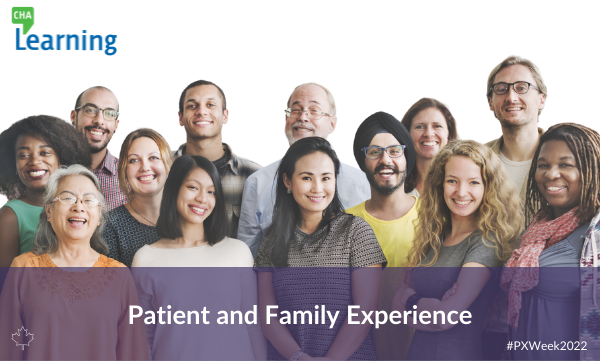This article is part of a series of articles on the topic of People-Centered Care originally published on LinkedIn as part of Beryl Institute’s Patient Experience Week 2022.
You can find the original LinkedIn article here.
—
Note: In this post, for the sake of brevity, the term “patients” can include any person involved with the health system for care or service, including those we would otherwise call residents, clients, etc. I may also use the broader term of “people with lived experience”. The acronym PCC will be used in place of People-Centred Care.
Today, I’ll talk about what patient and family experience means and the factors that have in impact on it. I’ll also introduce patient experience measurement. Look out for the self-reflection/discussion question at the end of the post.
What is patient and family experience?
First, let’s define patient experience. According to the Beryl Institute, patient experience is the “sum of all interactions, influenced by an organization’s culture, that influence patient perceptions across the continuum of care” (n.d.). This is a pretty broad definition of what encompasses a healthcare experience.
How can we better understand what patient experience is? We can start by speaking to an individual patient or small group of people to understand what matters to them and what impacted their experience. Can you use the experience of one person or a few people to shape the design and delivery of healthcare services? Will those experiences represent that of the many? What gaps might there be? What stories will you hear and what stories will you not hear?
A person’s experience can be momentary or lifelong. It can be shaped by a single encounter, or many encounters over years. It can be impacted by their own personal experience, or that of their family members. It can be shaped by their role as a caregiver or even as someone who not only is receiving care, but also works in the healthcare system. One single encounter can impact a person’s perspectives for life, for better or worse.
Experience is multidimensional and can’t be measured by a single indicator. It can be standardized by engaging with a wide variety of patients and families to understand all the potential elements that create a positive experience. And, experience isn’t just about a single encounter with a healthcare provider. It is about the pre and post encounter, too. It is about the outcomes of care. It is about the people the patient engages with in preparation for an appointment. It can be about the education and supports they get to self-manage their care afterwards. On the list goes….
Is satisfaction the same as experience?
People sometimes conflate the term satisfaction with experience. Are they the same? No, because satisfaction is only one element of experience. Satisfaction is the degree to which a person’s expectations were met. Two people receiving the identical care may have different expectations and therefore may give different satisfaction ratings. This is why healthcare organizations have to have more complex and thoughtful ways of measuring patient experience besides simply satisfaction surveys.
What impacts experience? The below table comes from the CHA Learning People-Centred Care Program and summarizes the common dimensions of patient experience as outlined by several leading organizations in the field. These dimensions are considered to be key influencers of experience that organizations must pay attention to.
| Principles of Person-Centred Care (Picker Institute |
Achieving an Exceptional Care Experience (IHI |
Patient Experience Defined (Beryl Institute) |
Core Concepts of Patient- and Family-Centered Care (IPFCC) |
| Involvement in decisions and respect for patient’s preferences | Respectful partnerships | Perceptions | Dignity and respect |
| Clear information, communication, and support for self-care | Evidence-based care | Interactions | Information sharing |
| Continuity of care and smooth transitions | Leadership | Continuum of care | Collaboration |
| Involvement of, and support for, family and carers | Hearts and minds | Organizational culture | Participation |
| Emotional support, empathy, and respect | Reliable Care | ||
| Attention to physical and environmental needs | |||
| Effective treatment, delivered by trusted professionals | |||
| Fast access to reliable healthcare advice |
(CHA Learning, 2019)
Why is patient experience important?
So, why is experience important? Poor patient and family experience is one indicator that people-centred care is not being practiced effectively. Something is wrong and there is a need to dig deeper to find out what is going on. Patient experience is just one indicator of PCC but it’s an important one. We can understand patient experience at the three levels of health care:
- At the individual care level, where a patient expresses an individual experience-related issue
- At the organizational level, where patient experience is being measured and monitored at an aggregate level. This can also be true for specific populations (i.e.: cultural minorities, underserviced or marginalized populations) or those with specific diseases and treatment needs.
- At a system level, where patient and family experience of care is considered fundamental to the overall goal of health system improvement. It must be a system-wise priority in order to achieve high quality, effective healthcare for all.
Evidence also indicates that improved patient experience is critical at a systems level because better experience may lead to:
- More engaged patients, who are more likely to take an active lead in their own care and self-management.
- Better clinical outcomes and better transitions between levels of care, which at a system level has an impact on population health.
- Improved patient safety practices and involvement in quality improvement and error prevention
- Lower costs to the health system, correlated to shorter hospital stays, fewer readmissions, lower use of emergency services, overall better system utilization and flow – all of which also have a positive impact on quality of care and quality of life for patients and families.
- More positive relationships between patients and providers, which have an impact on staff experience. Staff experience is also correlated to numerous impacts on the health system and has a cyclical impact on patient experience.
(National Health Services, 2013, NRC Health, 2017 & Agency for Health Research and Quality, 2017)
What do healthcare organizations need to do to prioritize patient experience?
There are some critical success factors for healthcare organizations in terms of positively impacting patient experience (adapted from The National Health Services (NHS) Patient Experience Book (2013)).
- The board is accountable for and committed to patient experience and its continual pro-active improvement. Board members and leaders are visible and present with patients, families and staff.
- The organization is engaged with patient experience and understands and articulates the value of it to the organization, its staff and patients.
- The organization has a clear vision (together with values and standards) for patient experience that’s known and understood by everyone in the organization, including staff and patients. It’s embedded into the culture. Leaders model the values and behaviours that influence experience.
- The organization enables staff to gather feedback from patients, to capture patient stories, and to make improvements at the point of care.
- Patient experience measurement and improvement are built into the organization’s short and long-term business plan.
- Patient experience is considered equal in importance to quality, clinical effectiveness and safety.
- The link between patient experience and staff wellbeing is recognized and plans are developed to improve both (including collecting data on staff wellbeing).
- Patient experience improvement is part of staff and leader recruitment, development, and appraisal.
- Resources (budget, staff, time, technology, processes) are dedicated to patient experience evaluation including tools development, data collection, analysis and implementation of action plans.
How do we evaluate patient experience?
Data from a variety of sources/techniques needs to be collected to gain a complete picture of the patient experience in an organization. Each technique has their own advantages and disadvantages. Some of these techniques for evaluating experience are qualitative and some are quantitative. They can all be used as complements to one another, and the results used differently as part of an experience evaluation strategy.
| Technique | Advantage | Disadvantage |
| Patient stories |
|
|
| Surveys |
|
|
| Feedback (Comments, concerns, complaints) |
|
|
| Incident reports |
|
|
| Focus groups and interviews |
|
|
| Committees and groups including patients/families |
|
|
Note. Adapted by CHA Learning (2019) from The Patient Experience Book. Retrieved from https://www.england.nhs.uk/improvement-hub/wp-content/uploads/sites/44/2017/11/Patient-Experience-Guidance-and-Support.pdf Copyright 2013 by NHS Institute for Innovation and Improvement
This is just an introduction to this topic. If you’re interested in more formal learning on the topic of patient experience measurement check out our online People-Centred Care Program.
Tomorrow, I’ll be talking about the importance of staff and clinician engagement and experience as a critical component of People-Centred Care.
Today’s reflection or discussion question: What is one way you have seen patient experience being meaningfully prioritized in a healthcare organization?





